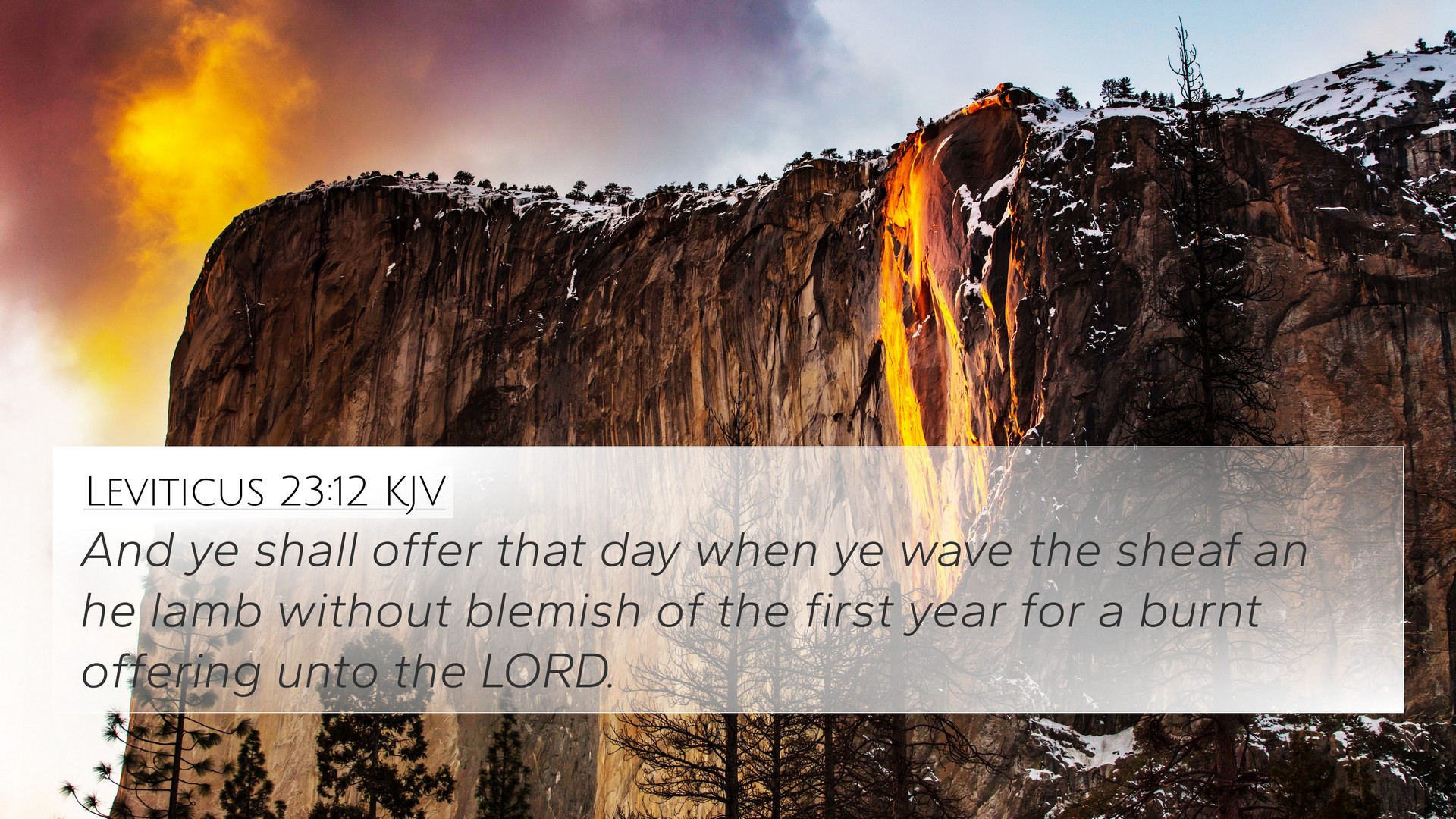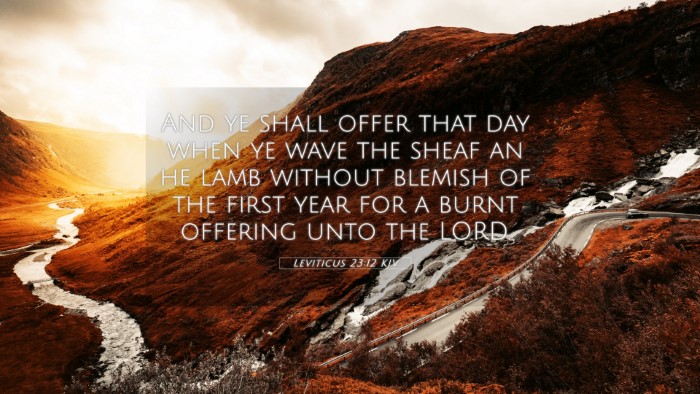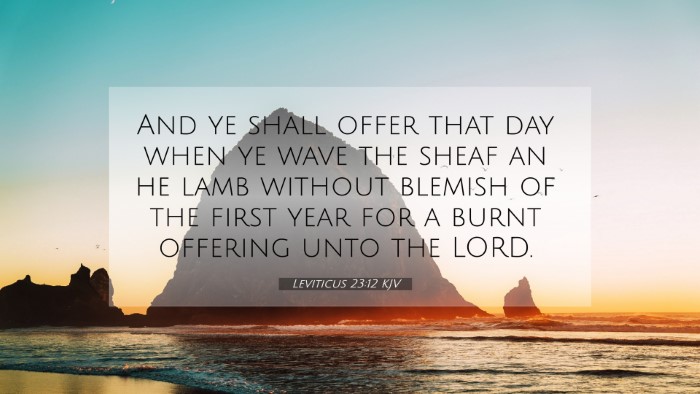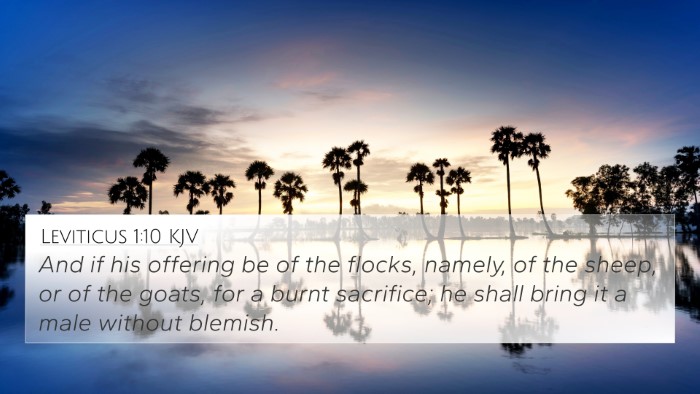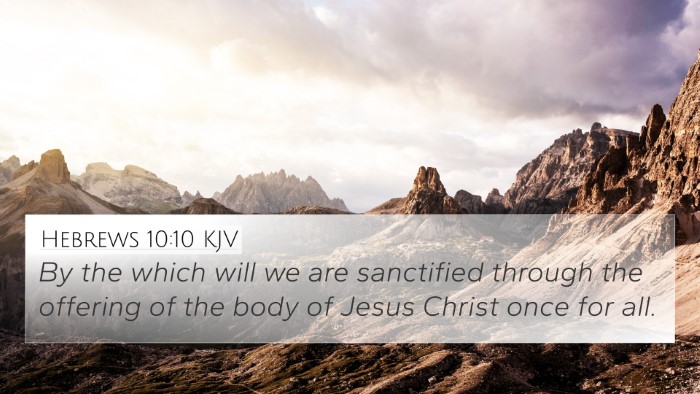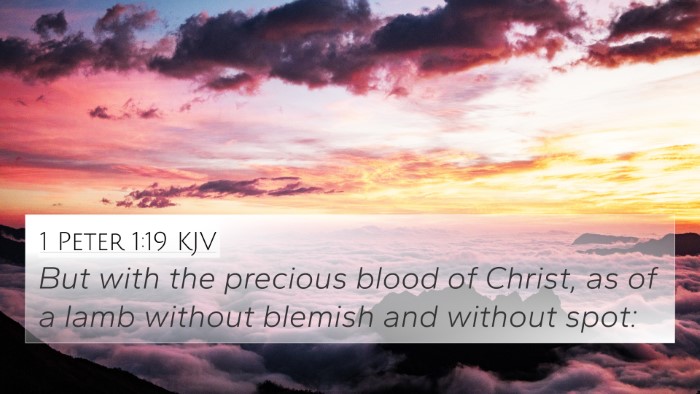Understanding Leviticus 23:12
Leviticus 23:12 reads:
“And you shall offer on that day, when you wave the sheaf, a male lamb of the first year without blemish as a burnt offering to the Lord.”
Summary of Meaning
In Leviticus 23:12, God instructs the Israelites regarding the offering that must be made during the Feast of Firstfruits. This command is significant in understanding the broader context of Jewish religious practices and the symbolism associated with offerings.
Insights from Public Domain Commentaries
Matthew Henry
Matthew Henry emphasizes the importance of the sheaf offering, which represents gratitude for God's provision. He notes that the male lamb signifies purity and dedication, fulfilling divine requirements. This offering illustrates God's desire for holiness and the acknowledgment of His blessings.
Albert Barnes
Albert Barnes elaborates on the significance of the timing of this offering. The sheaf was to be presented on the day after the Sabbath, marking a new beginning and the anticipation of a fruitful harvest ahead. He indicates that this practice symbolizes the resurrection and is reflective of Christ's resurrection as the firstfruits of those who have fallen asleep (1 Corinthians 15:20).
Adam Clarke
Adam Clarke focuses on the ritual's specifics, discussing how this burnt offering served as a means of atonement and an appeal for God's favor upon the harvest. Clarke also highlights that this act of worship shows loyalty and dependence on God for stability and sustenance in everyday life.
Bible Cross-References
This verse can be linked to various other scriptural references that enhance understanding of its themes and significance. Here are pertinent cross-references:
- Exodus 12:5 - Discusses the selection of the lamb, highlighting the requirement of perfection.
- Leviticus 23:10 - Refers to the wave offering and its connection to the harvest season.
- 1 Corinthians 15:20 - Relates to Christ as the firstfruits, drawing a parallel with the sheaf offering.
- John 12:24 - Connects to the theme of dying to produce a harvest, echoing sacrificial ideas.
- Hebrews 10:4 - Discusses the inadequacy of animal sacrifices, leading to the ultimate sacrifice of Christ.
- Mark 4:26-29 - The parable of the seed illustrates the growth and harvest aspect.
- James 1:17 - Affirms that every good gift comes from above, paralleling the acknowledgment of God's provisions.
Thematic Connections
Leviticus 23:12 fosters an understanding of various themes in the Bible:
- Gratitude: The offering signifies an attitude of thankfulness towards God for His provisions.
- Purity and Sacrifice: The expectation of an unblemished lamb reflects the need for holiness in offering to God.
- Resurrection: This verse connects to themes of new beginnings and resurrection hope in Christ.
Tools for Bible Cross-Referencing
To deepen your understanding of Leviticus 23:12 and its context, using these tools can enhance your study:
- Bible Concordance: A systematic listing of biblical words and verses for easy reference.
- Bible Cross-Reference Guide: Helps identify related verses for deeper insights into thematic connectivity.
- Comprehensive Bible Cross-Reference Materials: Offer extensive listings of scriptural connections that enrich study.
Conclusion
In conclusion, Leviticus 23:12 is a verse steeped in rich theological significance. The act of offering a male lamb without blemish symbolizes devotion, purity, and alignment with God's intentions for His people. By exploring cross-references and thematic relations, one can gain a fuller appreciation of the intertwining narratives within scriptural texts, ultimately fostering a deeper faith and understanding.
